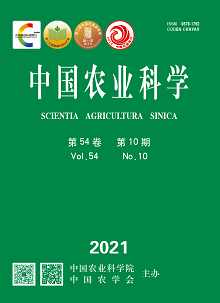【Objective】Fat is an important nutrient element in animal diet, and it is also the main energy supply material, so it plays an important role in animal production. The purpose of this study was to investigate the effects of high fat diet on growth performance, energy metabolism and slaughter performance of early weaned Hu lambs before and after weaning, so as to provide theoretical basis and technical support for healthy breeding of early weaned lambs. 【Method】Thirty pairs of healthy Hu sheep twin lambs with similar birth age, similar weight were randomly divided into two groups, including high fat diet group (HF: 26.89% and 5.07%) and normal fat diet group (NF: 15.15% and 2.80%). The lambs of the two groups were fed with milk replacer and pellet with different fat levels from 7 to 60 days old and weaned milk powder at 60 days old, and then which were fed with the same pellet from 60 to 120 days. Nine pairs of twin lambs were randomly selected at the age of 50-60 and 110-120 days according to the average body weight, and the digestion and metabolism trails were conducted by the method of total feces and urine collection to evaluate the energy metabolism of lambs fed diets with different fat levels before and after weaning. According to the average body weight of lambs, nine pairs of twin lambs were randomly slaughtered at the age of 60 and 120 days to test slaughter performance, organ indexes, and gastrointestinal development. 【Result】Before weaning, the total dry matter intake (DMI), total energy intake (GE), fecal energy (FE), urinary energy (UE), apparent digestibility of total energy, total energy metabolic rate (ME/GE), empty body weight (EBW), slaughter rate, GR value of lambs in the two groups were significantly higher than those in the control group .There was no significant difference in the proportion of stomach and intestines to pre slaughter live weight (P>0.05); The body weight, DE, ME, DE/ME, HCW, head weight, heart weight, hoof weight, the proportion of hoof weight to live weight before slaughter, omasum weight and small intestine weight of 60 day old lambs in HF group were higher than those in NF group (0.05<P<0.1), and the eye muscle area and abomasum weight were significantly higher than those in NF group (P<0.05). After weaning milk powder, all lambs were fed the same pellet to 120 days of age. DMI of lambs fed high fat diet at 61-120 stage and BW, LBW, EBW, HCW, skin + gross weight, heart weight, hoof weight and rumen weight of lambs at 120 days of age were significantly higher than those in NF group (P<0.05), and spleen and kidney weight were also higher than those in NF group (0.05<P<0.1); the feeding high fat diet before weaning did not affect energy metabolism, other organ index and gastrointestinal development of lambs after weaning (P>0.05). 【Conclusion】Feeding high fat diet before weaning could improve the body weight, digestible energy and metabolizable energy, carcass weight and eye muscle area of lambs. Feeding high fat diet during lactation significantly increased feed intake, body weight, live weight before slaughter and carcass weight of lambs after weaning. In conclusion, the increasing dietary fat content before weaning had a positive effect on energy metabolism and slaughter performance of Hu sheep twin male lambs before and after weaning.









